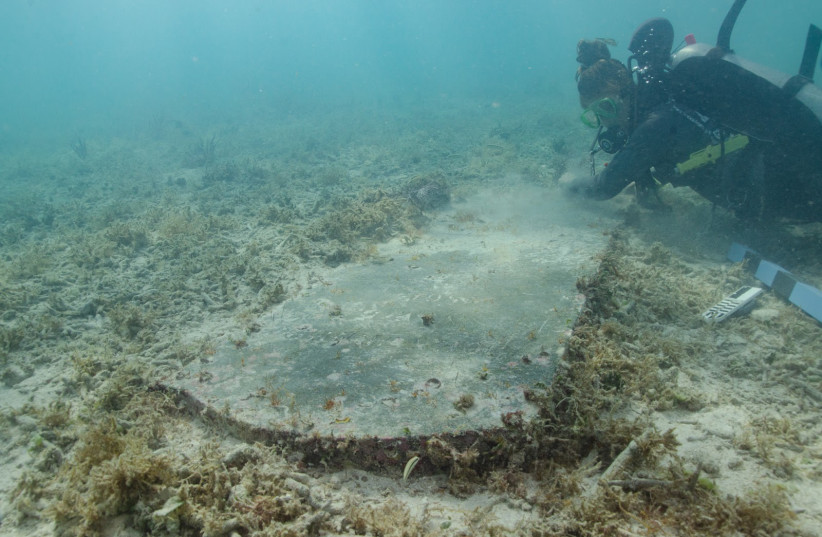Underwater cemetery and 19th century hospital discovered by archaeologists
Archaeologists discovered the remains of a 19th century hospital and cemetery on an island near Dry Tortugas. Both the cemetery and the hospital were found completely submerged.
The site was originally discovered in August 2022 when a graduate student, from the University of Miami, conducted a survey.
The yellow fever hospital ward
The hospital, which was considered to be minimal at the time, potentially saved many lives as the disease was isolated alongside its carriers. After the hospital was abandoned, the US military used the facility as a Marine Hospital Service between 1890 and 1900.
 An unsigned watercolor painting depicts a hospital and cemetery on an island in the Dry Tortugas. (credit: Image courtesy of the National Park Service)
An unsigned watercolor painting depicts a hospital and cemetery on an island in the Dry Tortugas. (credit: Image courtesy of the National Park Service)The hospital, which was abandoned in 1873, had once been used to quarantine patients with yellow fever. As the population surrounding the Fort grew, so did the risk of infectious outbreaks. Yellow fever, a mosquito-borne disease, had a major outbreak on the island throughout the 1860s and 1870s. Dozens of people died from the disease.
According to the World Health Organization (WHO), half of all patients who contract yellow fever die from the disease within 7-10 days. A vaccine for yellow fever was invented in 1938.
 University of Miami graduate student Devon Fogarty examines the headstone of John Greer who died while working at Fort Jefferson on Nov. 5, 1861. The gravesite is now completely underwater. (credit: Image courtesy of the National Park Service)
University of Miami graduate student Devon Fogarty examines the headstone of John Greer who died while working at Fort Jefferson on Nov. 5, 1861. The gravesite is now completely underwater. (credit: Image courtesy of the National Park Service)People who contract yellow fever often experience jaundice, which is where the disease obtained its name, alongside other symptoms like abdominal pain, vomiting and bleeding from the eyes, nose, eyes or stomach.
In the United States, an estimated 100,000-150,000 people died from yellow fever, according to a peer-reviewed article in the National Library of Medicine.
Identifying the underwater graves
In the cemetery, now known as the Fort Jefferson Post Cemetery, only one individual has been successfully identified so far, although it is believed that dozens of US soldiers had been buried there between 1890 and 1900. Many prisoners were also imprisoned on the site.
“This intriguing find highlights the potential for untold stories in Dry Tortugas National Park, both above and below the water,” said Josh Marano, maritime archeologist for the south Florida national parks and project director for the survey. “Although much of the history of Fort Jefferson focuses on the fortification itself and some of its infamous prisoners, we are actively working to tell the stories of the enslaved people, women, children and civilian laborers.”
The only individual to have yet been identified, John Greer, worked as a laborer at the fort and died on November 5, 1861. Greer’s grave was made with the same greywacke used to construct the first floor of Fort Jefferson.
Efforts are still being made to learn more about Greer’s life and identify the other graves.





Comments are closed.